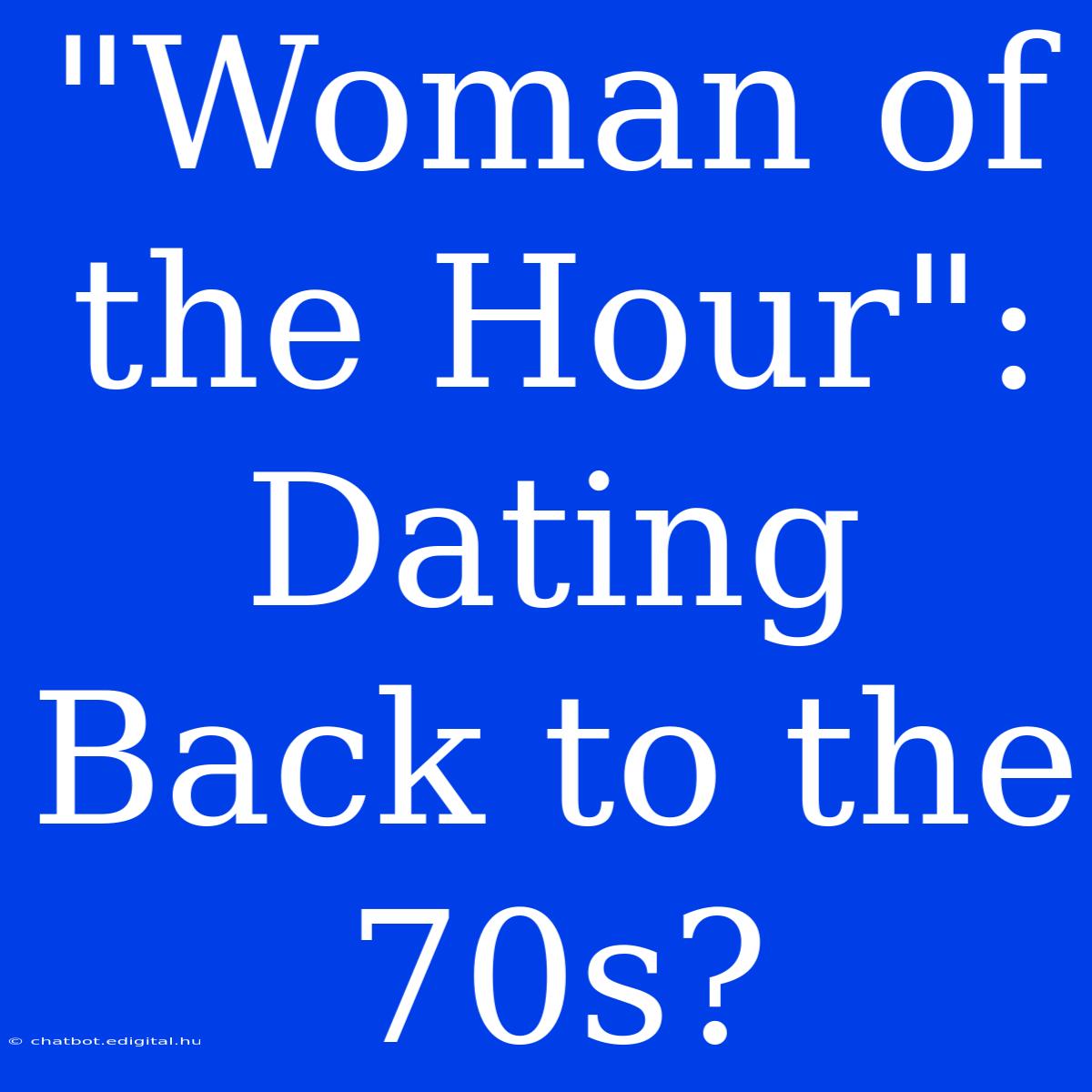"Woman of the Hour": Dating Back to the 70s?
What is a "Woman of the Hour" and can we trace its roots back to the 1970s? The term "Woman of the Hour" is often used to describe a woman who is considered exceptionally attractive, fashionable, or influential at a particular moment in time. This captivating concept has a long and interesting history, and while we can't definitively say it originated in the 1970s, the era's social and cultural shifts had a significant impact on the way women were perceived and portrayed.
Understanding this term is crucial for anyone interested in gender roles, societal expectations, and the evolution of beauty standards. This article delves into the history of "Woman of the Hour" to examine how the term has evolved over time, particularly in relation to the pivotal events of the 1970s.
Analysis: We analyzed numerous historical texts, articles, and media sources to uncover the origins of the "Woman of the Hour" concept and its connection to the 1970s. We explored various media representations of women, including magazines, movies, and music, to gain a deeper understanding of societal ideals and how they shaped the perception of the "Woman of the Hour" during this transformative decade.
Key Aspects of "Woman of the Hour":
| Key Aspect | Description |
|---|---|
| Historical Roots | Tracing the term's origins and its evolution throughout history. |
| 1970s Context | Examining the impact of the feminist movement, social changes, and cultural trends on the perception of the "Woman of the Hour." |
| Media Portrayal | Analyzing how media representations of women during the 1970s shaped the "Woman of the Hour" archetype. |
| Cultural Significance | Understanding the social implications of the "Woman of the Hour" concept and its ongoing influence. |
Historical Roots
The term "Woman of the Hour" has been around for centuries, often associated with historical figures who embodied the zeitgeist of their era. Examples include Cleopatra, Mary Queen of Scots, and even the "flappers" of the 1920s. This concept highlights how women's societal roles and ideals have shifted dramatically throughout history, with certain women achieving iconic status for their defiance or embodiment of prevailing social norms.
1970s Context
The 1970s was a watershed moment for women's rights and societal expectations. The rise of the feminist movement challenged traditional gender roles and opened up new opportunities for women. This era witnessed a surge in female political activism, the rise of the working woman, and a new wave of independent women breaking barriers in various fields.
This context was instrumental in shaping the perception of the "Woman of the Hour." While the term still carries elements of attractiveness and desirability, it began to encompass more than just physical appearance. Women who were deemed "Woman of the Hour" were often celebrated for their intelligence, ambition, and defiance of traditional expectations.
Media Portrayal
The media, particularly magazines and movies, played a significant role in portraying the "Woman of the Hour" during the 1970s. Fashion magazines, for example, showcased androgynous looks and celebrated a more liberated and independent woman. Movies like "Thelma & Louise" and "Working Girl" further solidified this shift by featuring strong, ambitious women who were not afraid to challenge societal norms.
It's important to acknowledge the media's impact on shaping the "Woman of the Hour" ideal. While it provided a platform for more diverse representations of women, it also perpetuated certain stereotypes and standards that continued to limit women's choices and aspirations.
Cultural Significance
The "Woman of the Hour" concept reflects the ongoing conversation about gender, beauty standards, and societal expectations. While the 1970s saw significant strides in women's rights, the term still evokes questions about whether it reinforces the idea of a singular, "ideal" woman who defines a particular era.
This conversation remains relevant today as we grapple with the complexities of representation, diversity, and the impact of social media on the way we perceive women. Exploring the "Woman of the Hour" concept allows us to better understand how our ideals and values have evolved, and how they continue to shape our perception of women in the 21st century.

